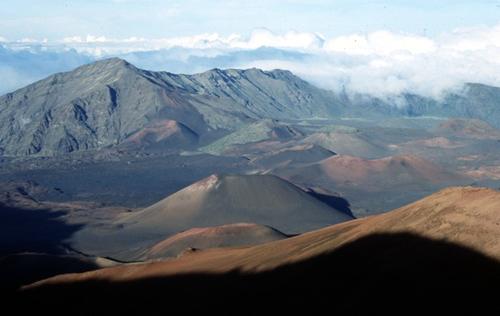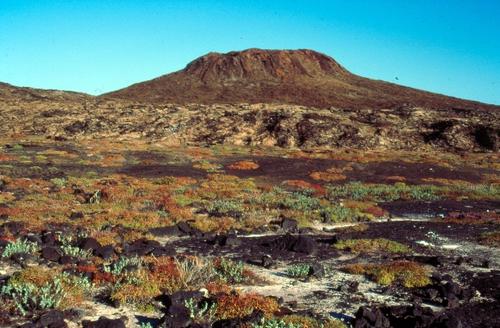Types of Volcanoes: Cinder Cones
Cinder cones inside the Haleakala Caldera, Maui, Hawaii
Image Credit: D. Mertmann
Sombrero Chino, Santiago Island
Cinder cones are circular to oval volcanic cone structures, which are composed exclusively or predominantly of pyroclastic ejecta dominated by cinder. They therefore form the simplest type of volcanoes.
Cinders are glassy rock fragments which contain numerous gas bubbles "frozen" as magma exploded into the air and then cooled quickly. These fragments accumulate around and downwind from a vent. Spheroidal and spindle-shaped bombs are common at cinder cones. Unlike the violently explosive eruptions that create large stratovolcanoes, cinder cones form when low-viscosity lava with lots of gas erupts, often as liquid fountains. Lava may be spewed hundreds of feet through the air. These volcanoes seldom exceed 500 m in height and form steep slopes of up 30 to 40º with a very wide summit crater.
Once this type of volcano has become dormant, a cinder cone normally never erupts again. Most of them are "single-shot" eruptive features. The next outburst will build a new cinder cone somewhere nearby.
In many cases, steam filters through the cinder cone for months or even years after the eruption has ended. The steam oxidizes the iron in the cinder, staining the cinder cone red. The result is a distinctive brownish-red appearance.
A typical cinder cone at the Galapagos is "Sombrero Chino", a small islet located near southeastern Santiago Island, because of its typical landform. Almost all of the islet is covered with very fragile lava and small lava tubes.

